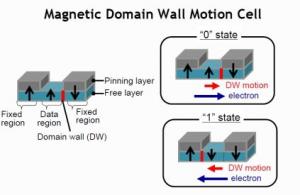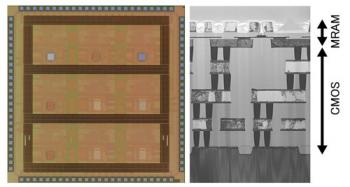
NEC announced the
successful operational demonstration of a 32Mb MRAM that can be embedded in SoCs. NEC has reduced the area of control circuits in the 32Mb MRAM
design in order to achieve superior cell efficiency that enables
73% of a memory macro's area to be allocated to memory cells. This was achieved by developing write circuits, which enables greater memory capacity. The high-speed cycle time of 9ns was achieved by adopting new decoder circuits that minimize delay.
Furthermore,
compatibility with an asynchronous SRAM was achieved by inserting
protocol transform circuits between the MRAM macro and I/O buffer
circuits.
In
November 2007 NEC developed a
high speed 250MHz, 1Mb MRAM macro suitable for embedding in system
LSIs. However, since the memory cell of the high speed 1Mb MRAM macro
consists of two transistors and one MTJ, enlarging its memory capacity
is more challenging than increasing the memory of MRAM macro equipped
with just one transistor and one MTJ cell.
The latest
demonstrations adapted MRAM macro cell arrays with NEC's newly
developed write circuits to achieve macro cell efficiency of 73%. This
both reduced MRAM macro size and enlarged memory capacity.
The
macro's word line decoder circuit was equipped with a word boost
circuit in order to shrink memory cell area. However, word boost
circuits are prone to delay and tend to extend the cycle time of
macros. To solve this problem, a word boost circuit featuring optimized
conversion levels was developed. Accordingly, the high speed operation
cycle time of 9ns was achieved despite being a large capacity 32Mb
macro.
Looking forward, NEC is aiming to demonstrate an SoC integrated
with large capacity, high speed MRAM macros.






